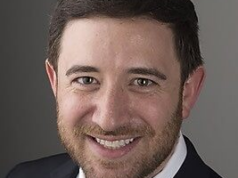
The Society of Vascular and Interventional Neurology (SVIN) colleagues and James Siegler (Cooper University Hospital, Camden, USA) identify that it should come as no surprise that the COVID-19 pandemic and its many “waves” has led to significant paradigm shifts in medical care—from triage all the way to treatment. It has been announced that the SVIN and Siegler are releasing a study on paradigm shifts in medical care during the COVID-19 pandemic.
Many reports have indicated that patients are avoiding healthcare institutions to prevent contact with COVID-19 patients and healthcare professionals. Falling rates have been observed across a range of acute and critical conditions including myocardial infarction, stroke, and various cancers. The long-term consequences of healthcare avoidance remain unknown but will become clear in the coming months and years.
Using a novel lens to explore these indirect consequences of the COVID-19 pandemic, Siegler and colleagues from the SVIN undertook a multicentre observational study to evaluate the timeline of critical care that is provided to patients with acute ischaemic stroke. These investigators pooled prospectively maintained data from 14 Comprehensive Stroke Centers (CSCs) in nine US states between January 2019 and July 2020. Together, these nine states accounted for nearly half of all COVID-19 cases in the USA and more than one-third of all COVID-19-associated mortalities. (If any indirect effect of the pandemic were to influence the care of stroke patients, it would involve these high-risk geographical regions.)
The objective of this investigation was to determine if patients were receiving standard-of-care reperfusion therapies (e.g., intravenous thrombolysis and/or thrombectomy) with the same expediency during the COVID-19 period as they were in the months prior. Using the AHA Target: Stroke campaign goal of a 60-minute door-to-needle time for intravenous thrombolysis as a primary outcome, the authors found that patients admitted to these hospitals during the COVID-19 pandemic were at a 45% lower odds of being treated in that 60-minute time window (adjusted odds ratio [OR] 0.55, 95% confidence interval [CI] 0.35–0.85).
The investigators were also able to track the times from patient arrival to first neuroimaging to thrombolysis bolus. It appears that the principal mediator of the delay in thrombolysis was the delay in time from head imaging to bolus (median delay of seven minutes across all sites). Despite the increased need for personal protective equipment, contact precautions, and other barriers between patients and providers, there appeared to be no delay in time from arrival to first neuroimaging. Furthermore, the delay in care appeared to persist throughout the months of June and July as the second wave of the pandemic spread across the southeastern and western USA.
While the overall delay to thrombolysis was minimal (median delay of only four minutes), this delay was observed in CSCs, which are known to have faster throughput and treatment times when compared to other healthcare institutions. It is possible that this delay may be magnified in community hospitals, and these findings warrant exploration in non-CSC institutions.
Although there was a mild but significant delay in door-to-needle times during the COVID-19 pandemic, there appeared to be no significant delay in door-to-groin puncture times for patients who underwent endovascular recanalization during COVID-19. This may reflect the careful planning and anticipation of COVID-19 patient care by leaders within the Society of Vascular and Interventional Neurology, as their consensus guidelines had been published early during the pandemic.
Altogether, these findings suggest large scale gaps in acute medical care for a common neurological problem that affects almost 1 million Americans per annum. It is important for healthcare institutions to appraise their local paradigms in acute stroke care to determine if similar gaps exist, and what steps they can take to reduce delays in care during a global crisis.













